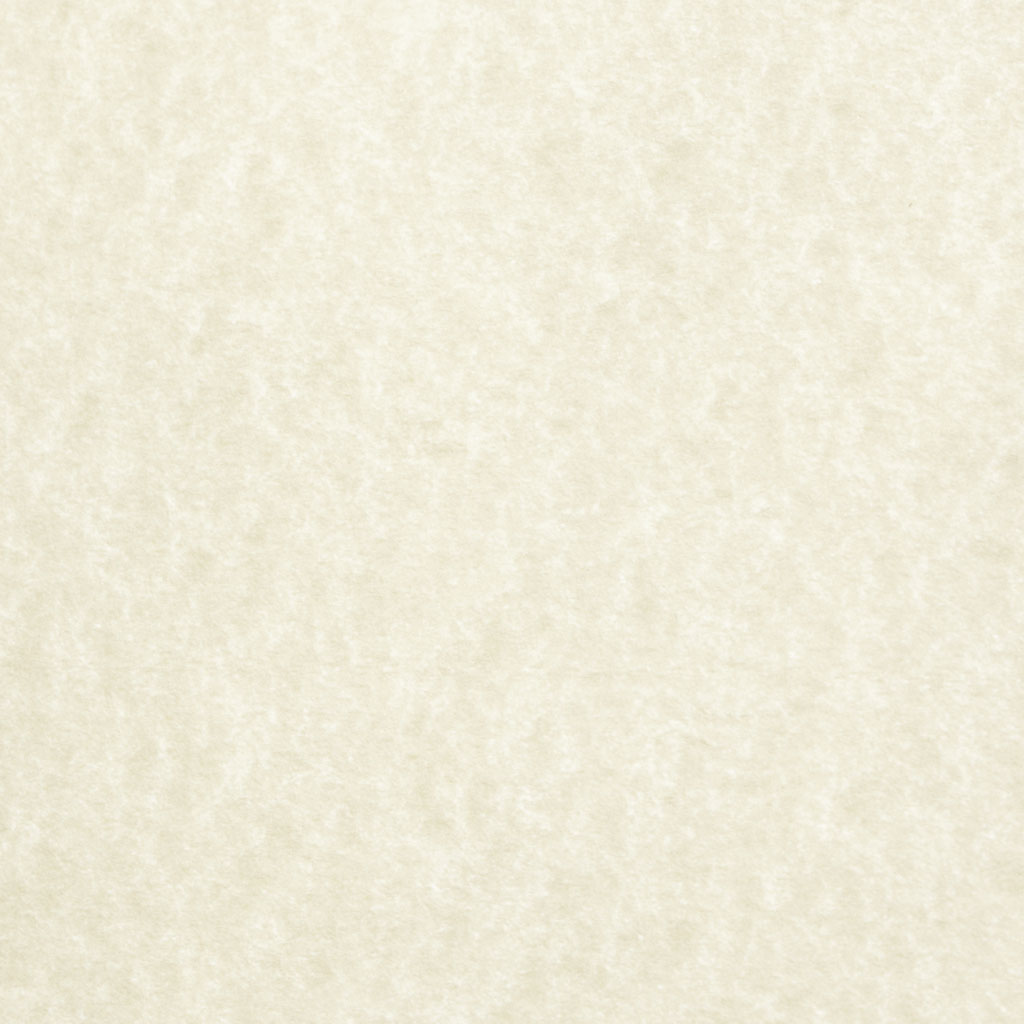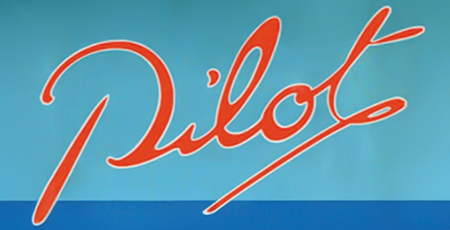Pilot R-O-Type Eyedropper Fountain Pen c.1937-1945
by Jim Mamoulides, June 13, 2025
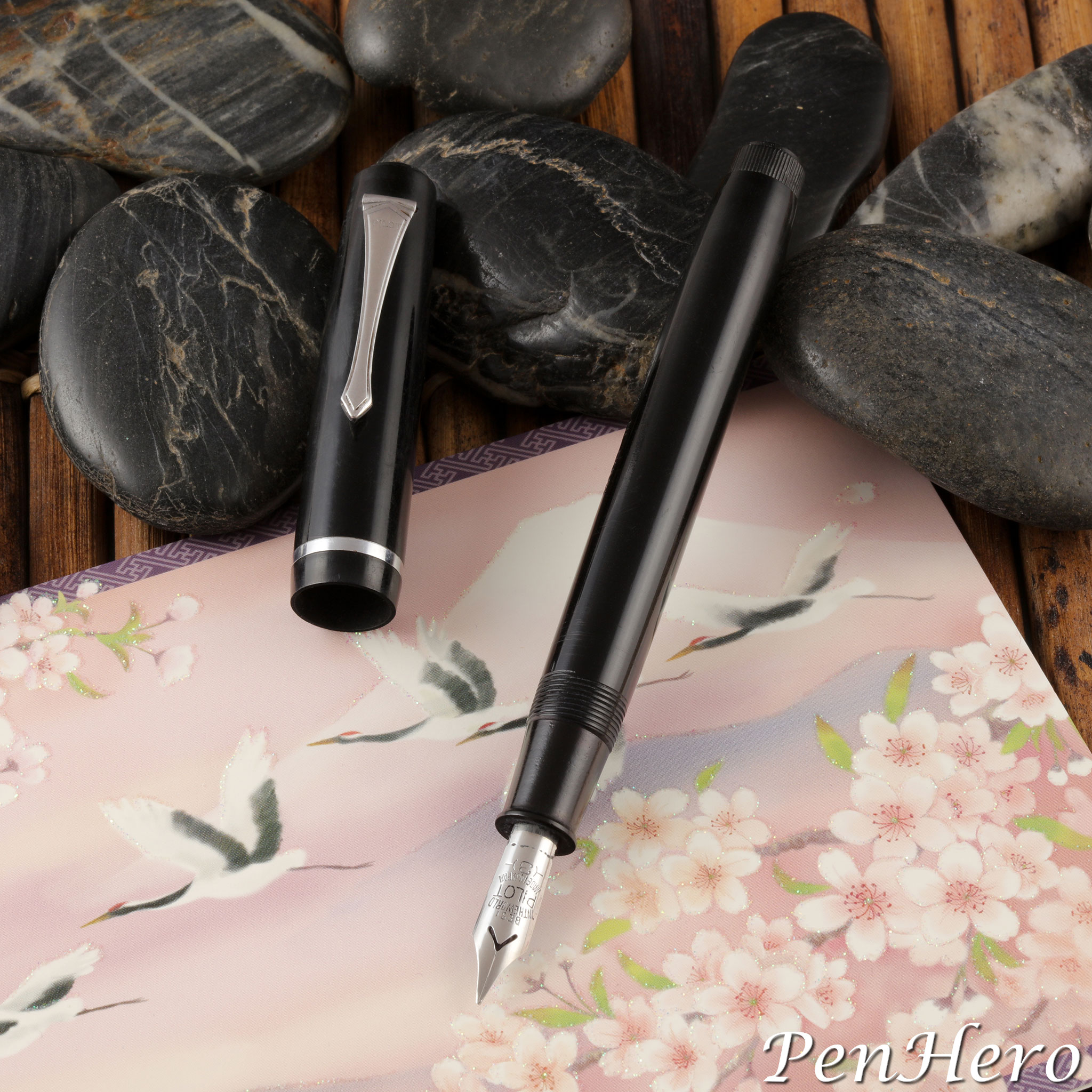 Pilot R-O-type eyedropper fountain pen c. 1937-1945
Pilot R-O-type eyedropper fountain pen c. 1937-1945
Pilot launches a new and distinctive look
This black hard rubber Pilot R-O-type ink shut off eyedropper fountain pen is the earliest R-type version, c. 1937-1945, identified by the clip and cap design. The kikuza (菊座) “chrysanthemum” clip is shaped like a tie. It’s stamped PILOT on the face and is the most decorative one found on R-type pens. This clip can be seen in Pilot advertisements from 1937 to 1945, and a simpler version was added during World War II. The cap top is sometimes called a “rooftop” cap, with its ledge and peak design.
The 5 ¼ inch long pen fills by unscrewing the nib section and dripping ink into the barrel using an eyedropper. To operate the pen the user slightly unscrews the knurled knob at the end of the barrel to pull back the ink stopper rod from the feed to allow ink flow. The seal at the barrel end must be in good condition to use the pen.
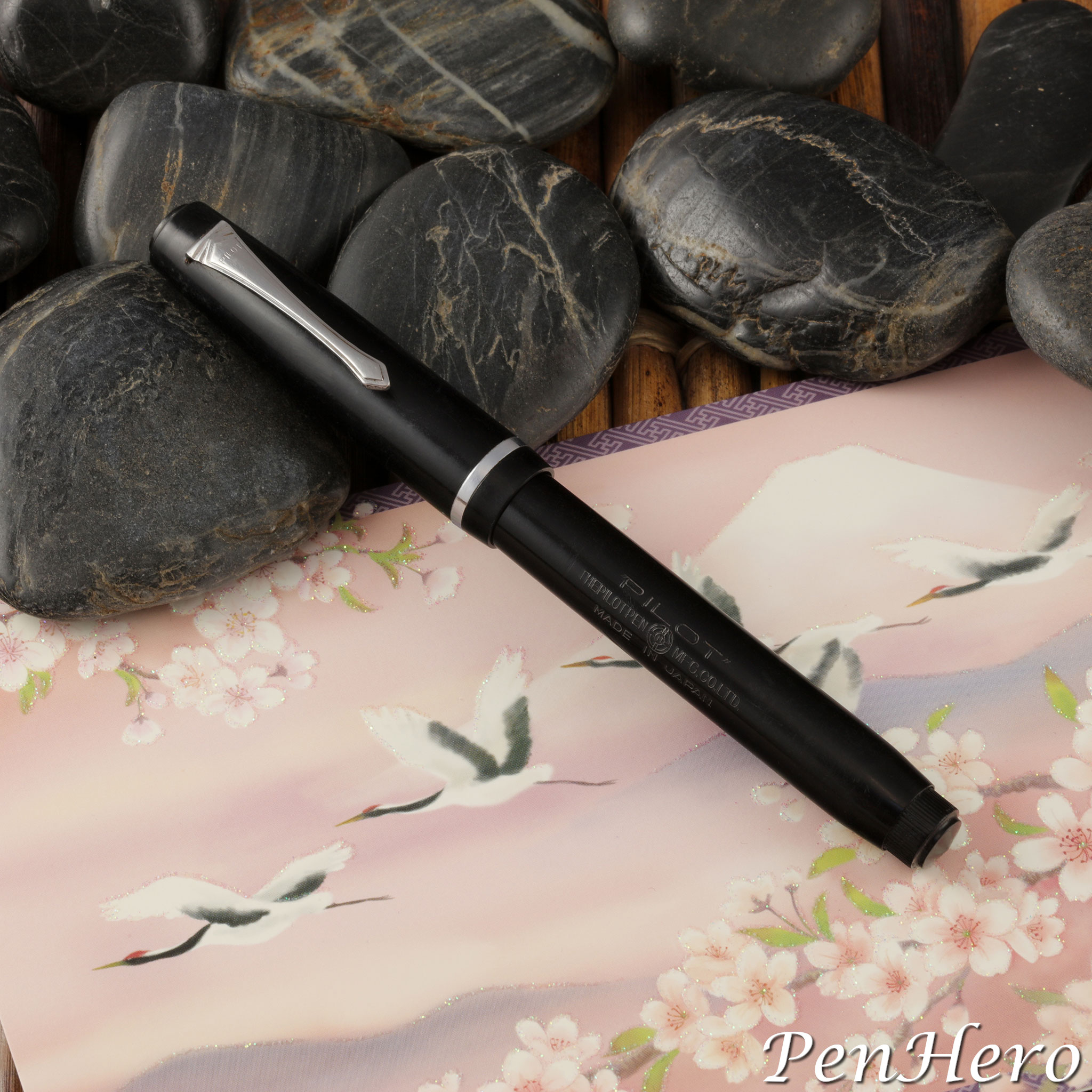 Pilot R-O-type eyedropper fountain pen c.1937-1945
Pilot R-O-type eyedropper fountain pen c.1937-1945
This example has a very long tine Pilot number 3 steel nib stamped BEST over IN THE WORLD over PILOT over MADE IN JAPAN. Note the V-shaped breather hole in the nib. The standard nib would have a heart shaped breather hole.
The barrel is stamped PILOT over THE PILOT PEN MFG. CO. LTD. over MADE IN JAPAN. The life preserver symbol in the center of the imprint is stamped N for Namiki. The company changed its name to the Pilot Fountain Pen Company Ltd. in 1938.
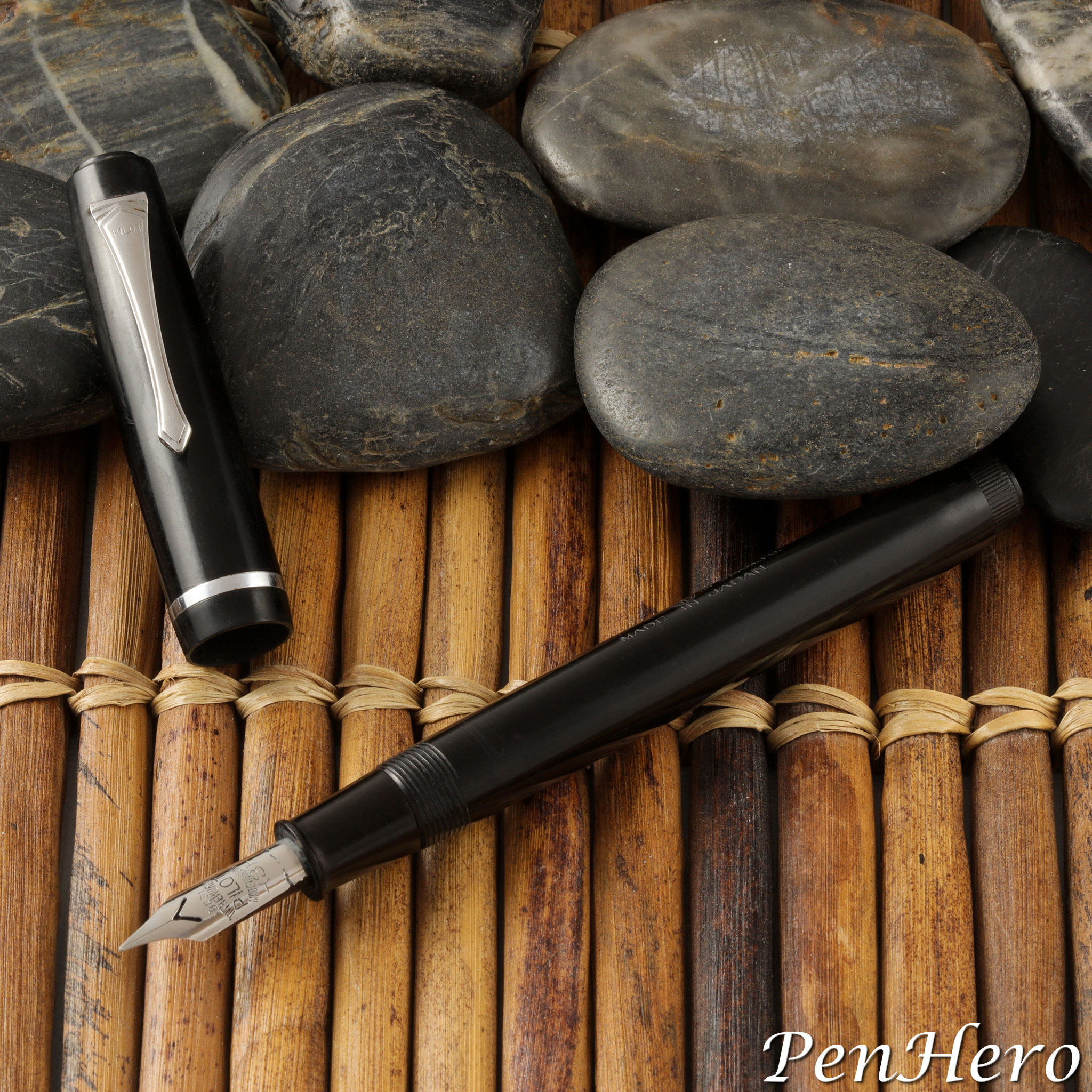 Pilot R-O-type eyedropper fountain pen c.1937-1945
Pilot R-O-type eyedropper fountain pen c.1937-1945
According to Fountain Pens of Japan, there are two versions of Pilot R-type fountain pens, differing by filling system. The eyedropper filler is an R-O-type, where 'O' indicates eyedropper. These are identified by the knurled knob at the end of the unbroken barrel that operates the ink-stop system. Pilot R-T-type pens, ‘T’ for lever fill, use a side lever.
Several Pilot collectors note that Pilot shifted from streamlined to R-type pens about 1937-1938. R-type pens can be found in both hard rubber and celluloid. Many Pilot pens would have this design during and immediately after World War II and it is featured in many Pilot advertisements. Pre-war pens can have gold plated trim, but as gold was restricted use during the war, wartime pens will have silver color trim. Wartime nib production was limited to stainless steel.
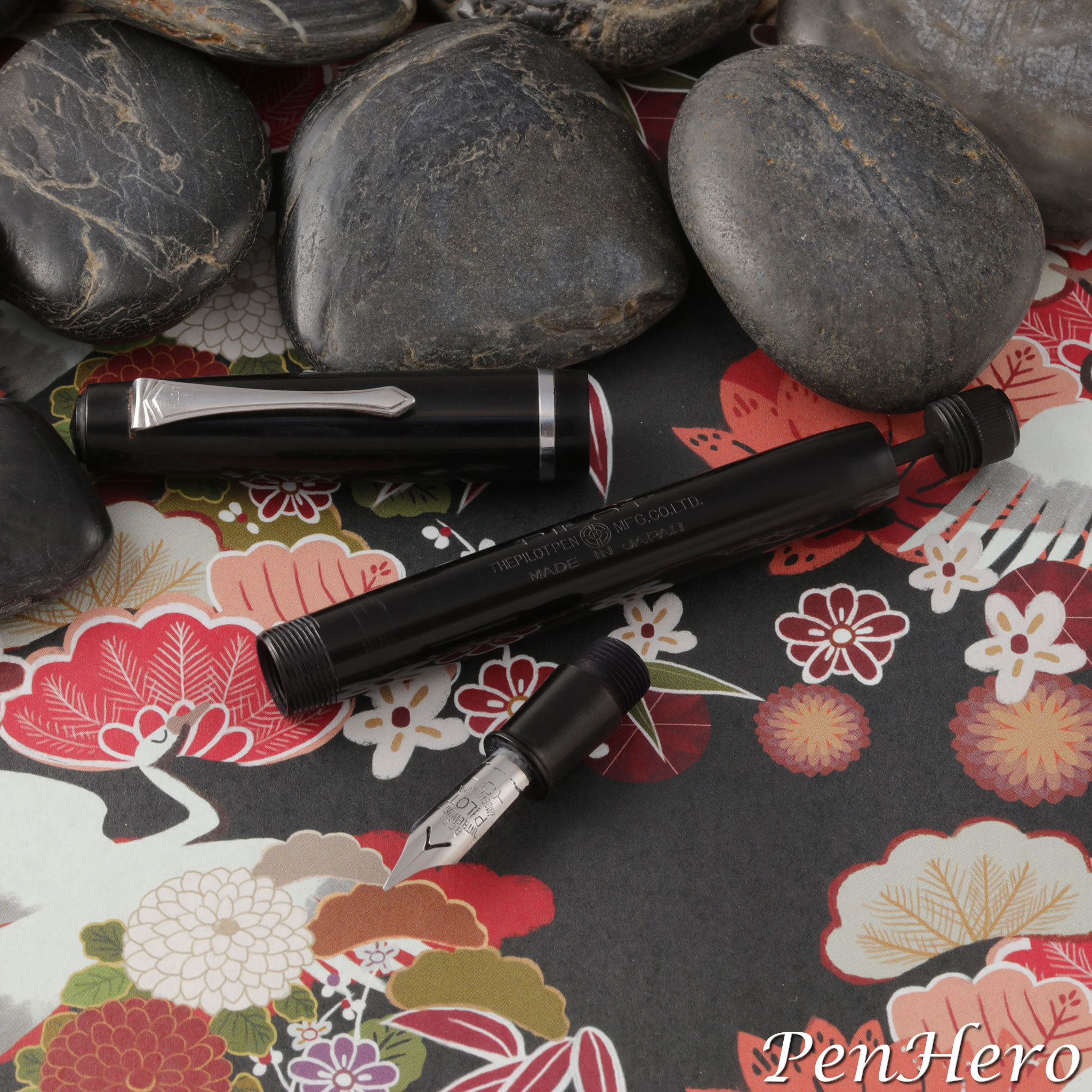 Pilot R-O-type eyedropper fountain pen c.1937-1945
Pilot R-O-type eyedropper fountain pen c.1937-1945
These pens are often referred to by their nib size, where an R-type pen with a number 3 nib would be a Number 3 R-type. At the time Pilot had about nine nib sizes ranging from 0, the smallest, to 50, the largest. I am not aware of any R-type pens with the larger nib sizes.
Performance
This Pilot R-O-type pen was part of a group with several other Japanese eyedropper pens acquired from an antique store in Maine. In my experience Japanese pens are rare finds in the wild and then usually in small groups, indicating they may have had one original owner.
Looking at the nib through a loupe it appeared to be a medium oblique. I dip tested it and found that at a slight angle the sweet spot was amazingly smooth, and the tines parted easily with a little pressure. It feels between flexible and semi-flexible, and it puts down a really nice line variation. With no pressure it writes like a medium stub. The trick is finding the right angle to hold it. Very impressive nib!
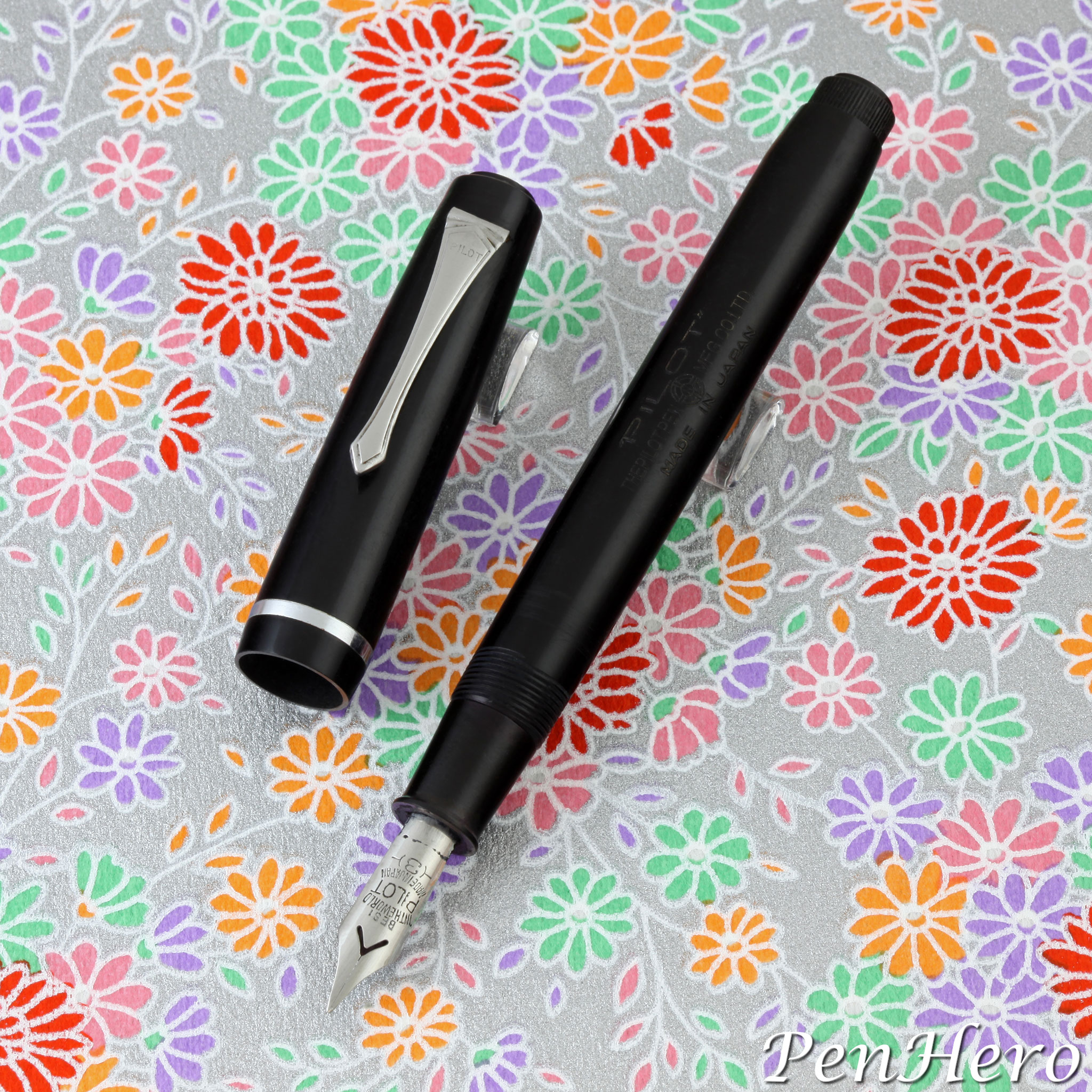 Pilot R-O-type eyedropper fountain pen c.1937-1945
Pilot R-O-type eyedropper fountain pen c.1937-1945
I wish I knew the difference, if any, between nibs with the V-shaped breather hole and the heart shaped ones on other Pilot nibs. Since the nib on this pen is flexible, is the breather hole design part of that equation?
The fit and finish on this pen is top level. The cap and barrel are quite worn and scuffed but have held up well. Everything that threads does so very smoothly. It does appear that the trim is plated, and it is excellent. Overall, a really nice pen and would be a great daily user.
In my experience, Pilot R-type fountain pens are uncommon in the United States. Most of the ones I’ve seen are hard rubber like this one. If this one is an indication, these are great user pens and hold a ton of ink. If you want one, make sure the barrel end seal is good. You won’t want a pocket full of ink!
References
Fountain Pens of Japan by Andreas Lambrou and Masamichi Sunami, © 2012 Andreas Lambrou Publishers, Epping, Essex, United Kingdom, page 210, 216
“History and Development” © Pilot Corporation
“Pilot 100th Anniversary Archive” © Pilot Corporation
Interact
Comments on this article may be sent to the author, Jim Mamoulides
